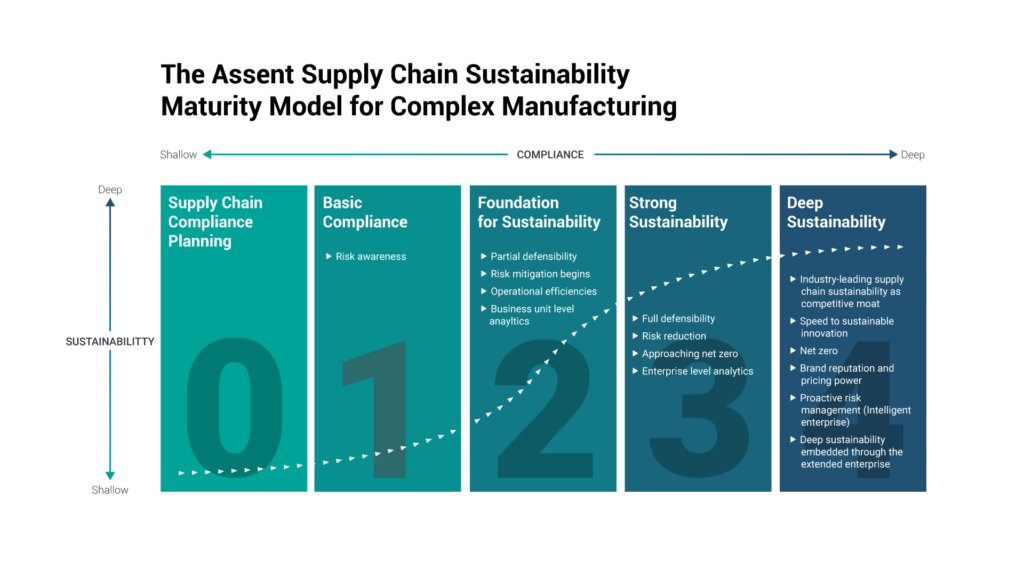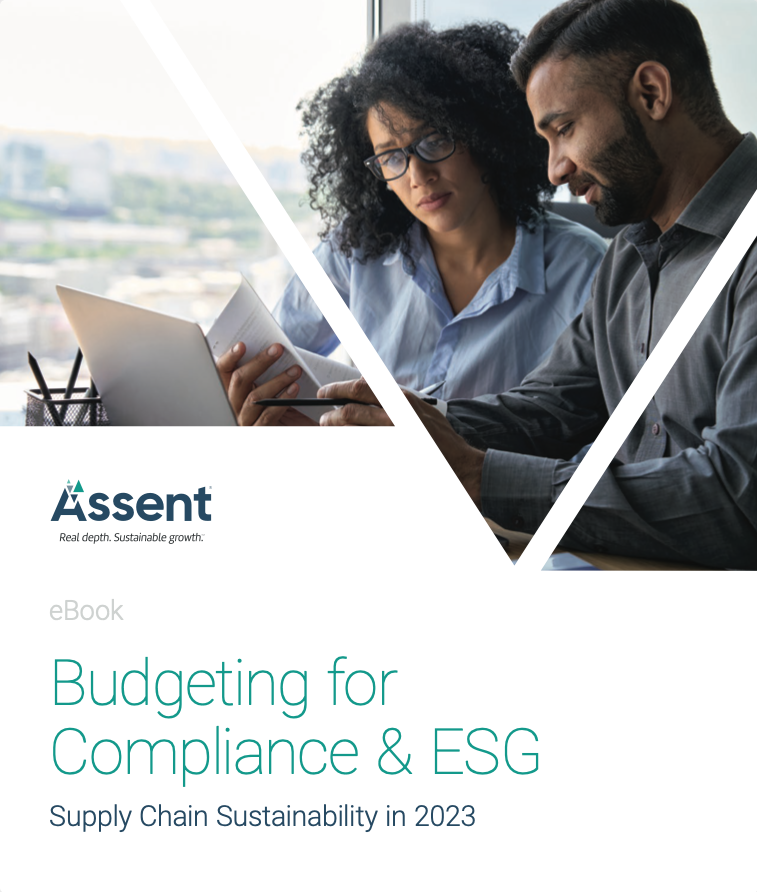A proactive approach to supply chain sustainability management can turn your program from a cost center to a revenue-defender and even profit generator. That’s because allocating your money and effort strategically will transform your programs to not only maintain compliance, but build a more resilient supply chain and support more in-demand products.
This article gives you a sneak peek at chapter four of our annual guide, Budgeting for Compliance & ESG, which is full of expert insights on building your 2023 budget from professionals who have built supply chain sustainability programs from the ground up.
To access the entire eBook, download a free digital copy of Budgeting for Compliance & ESG. It includes chapters on:
- The Regulatory Landscape
- Regulatory Deep Dive
- Tools for Supply Chain Sustainability
- Budgeting for Sustainability
Chapter Four: Budgeting for Sustainability
At Assent, we view supply chain sustainability holistically, including product compliance with ESG as the foundational pieces of deeper sustainability. By doing this, manufacturers can be sure their products are safe, environmentally-friendly, responsibly sourced and manufactured, and made in accordance with national and international law.
Each company’s sustainability maturity is different and their compliance and ESG budgets will vary according to their stage on the journey to deep sustainability. Starting from a basic compliance program, a manufacturer can expect four total phases when evolving to deep sustainability:
- Step One: Basic Compliance
- Step Two: Foundation for Sustainability
- Step Three: Strong Sustainability
- Step Four: Deep Sustainability

Starting from basic compliance to deep sustainability, each step requires additional information from the supply chain and capacity to analyze that data. It’s a company’s decision as to whether or not these needs are met with technology, people, or both.
Budgeting for People
Companies may decide to add full-time employees (FTEs) to their compliance or sustainability teams as their business grows. This approach is favored by some because it allows for succession planning, and gives employees the opportunity to gain company-specific compliance knowledge. However, it is often difficult to find personnel with the correct competencies, and increasing manual processes is regarded as an inefficient, dated way of doing business. The cost of an FTE is typically 1.2 times the cost of salary, once benefits, training, IT tools, and other necessities are factored in.
Training
We mentioned training for suppliers was key to getting high-quality data, but training is also important for program managers — especially in these times of change. Budget should be earmarked for ongoing training and education for both internal teams and suppliers. This approach will improve your compliance program and support your suppliers’ willingness and ability to engage with the team.
Allocating Sustainability Budget
Where does sustainability fit in your budget? There’s no one-size-fits-all answer. Product compliance and ESG are topics that spill into multiple facets of an organization, including:
- Engineering
- Procurement
- Quality control
- Legal
- IT
- Executive leadership
Lumping efforts into one department for the purpose of budgeting is the wrong approach. While it will simplify budget allocation, the company will not have an accurate understanding of how much it is truly spending on these initiatives.
For example, a small company with a compliance or sustainability team of one may budget that employee’s salary — perhaps $65,000 — as its total compliance cost. This does not mean the company is only spending that much on compliance. In reality, the company is likely spending closer to $150,000 to $200,000 on compliance after all factors are considered.
When budgeting for compliance, companies must understand this reality and take a comprehensive approach to their financial planning. This includes allocating budget for program expansion. Companies that implement a technological solution, for example, may evaluate what percentage of their budget should come from each department. If a solution would reduce the legal department’s efforts by the equivalent of one FTE a year (usually calculated at 2,000 hours), 30 percent of a solution’s cost may live in the legal budget.
Budgets will vary depending on each company’s goals. Companies that understand their goals, and how compliance activities and costs are spread throughout the organization, will be more successful in budgeting for the long term, and better equipped to make decisions that improve their program’s quality and efficiency.
.

Access the Full eBook
You can read the entire eBook, including the rest of the budgeting tips in this chapter, by downloading your free copy of Budgeting for Compliance & ESG: Supply Chain Sustainability in 2023. You’ll get expert guidance to help prepare you for 2023, including:
- How regulations like REACH, RoHS, TSCA, and the UFLPA evolved in 2022
- Compliance considerations to protect your market access
- How to prepare your business for growing ESG demands








